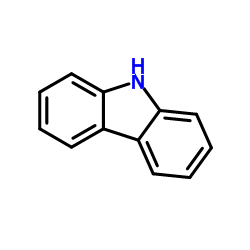Direct visualization of the quadruplex structures in human chromosome using FRET: Application of quadruplex stabilizer and duplex-binding fluorophore
Yung-Chieh Chan, Jyun-Wei Chen, Sheng-Yuan Su, Cheng-Chung Chang
文献索引:Biosens. Bioelectron. 47 , 566-73, (2013)
全文:HTML全文
摘要
The G-quadruplex structures in the telomere of a chromosome can not only protect the internal chromosome sequences by preventing the improper activation of DNA-damage-response pathways but also become targets for cancer treatments. In this manuscript, we wish to prove the existence of G-quadruplex structure formation, rather than G-quadruplex sequence, in chromosome of human cancer cells. Based on our studies, the fluorescent mapping of G-quadruplex structures in the chromosome is possible with the combination of G-quadruplex targeting fluorophore (BMVC, 3, 6-bis-(1-methyl-4-vinylpyridinium)-carbazole diiodide) and duplex-binding fluorophores (Hoechst or propidium iodide). By means of an applicable incubation time between cell cycle period and proper staining procedure to the chromosome, FRET (fluorescence resonance energy transfer) between G-quadruplex targeting fluorophore and duplex-binding fluorophore can increase the signal contrast of the fluorescent color and the fluorescent mapping of quadruplex structures can be easily observed using fluorescence microscopy. These observations are further supported by basic spectral analysis, titration binding assay, gel electrophoresis binding competition assay and confocal microscopy.
相关化合物
| 结构式 | 名称/CAS号 | 分子式 | 全部文献 |
|---|---|---|---|
 |
咔唑
CAS:86-74-8 |
C12H9N |
|
Convenient QSAR model for predicting the complexation of str...
2009-01-01 [Bioorg. Med. Chem. 17 , 896-904, (2009)] |
|
Electromechanical response of silk fibroin hydrogel and cond...
2015-11-01 [Mater. Sci. Eng. C. Mater. Biol. Appl. 56 , 1-8, (2015)] |
|
Clausenawallines G-K, carbazole alkaloids from Clausena wall...
2013-04-01 [Phytochemistry 88 , 74-8, (2013)] |
|
Interactions of newly designed dicationic carbazole derivati...
2013-09-07 [Org. Biomol. Chem. 11(33) , 5512-20, (2013)] |
|
Fluorescence sensing of caffeine in aqueous solution with ca...
2012-09-01 [Bioorg. Med. Chem. Lett. 22(17) , 5379-83, (2012)] |